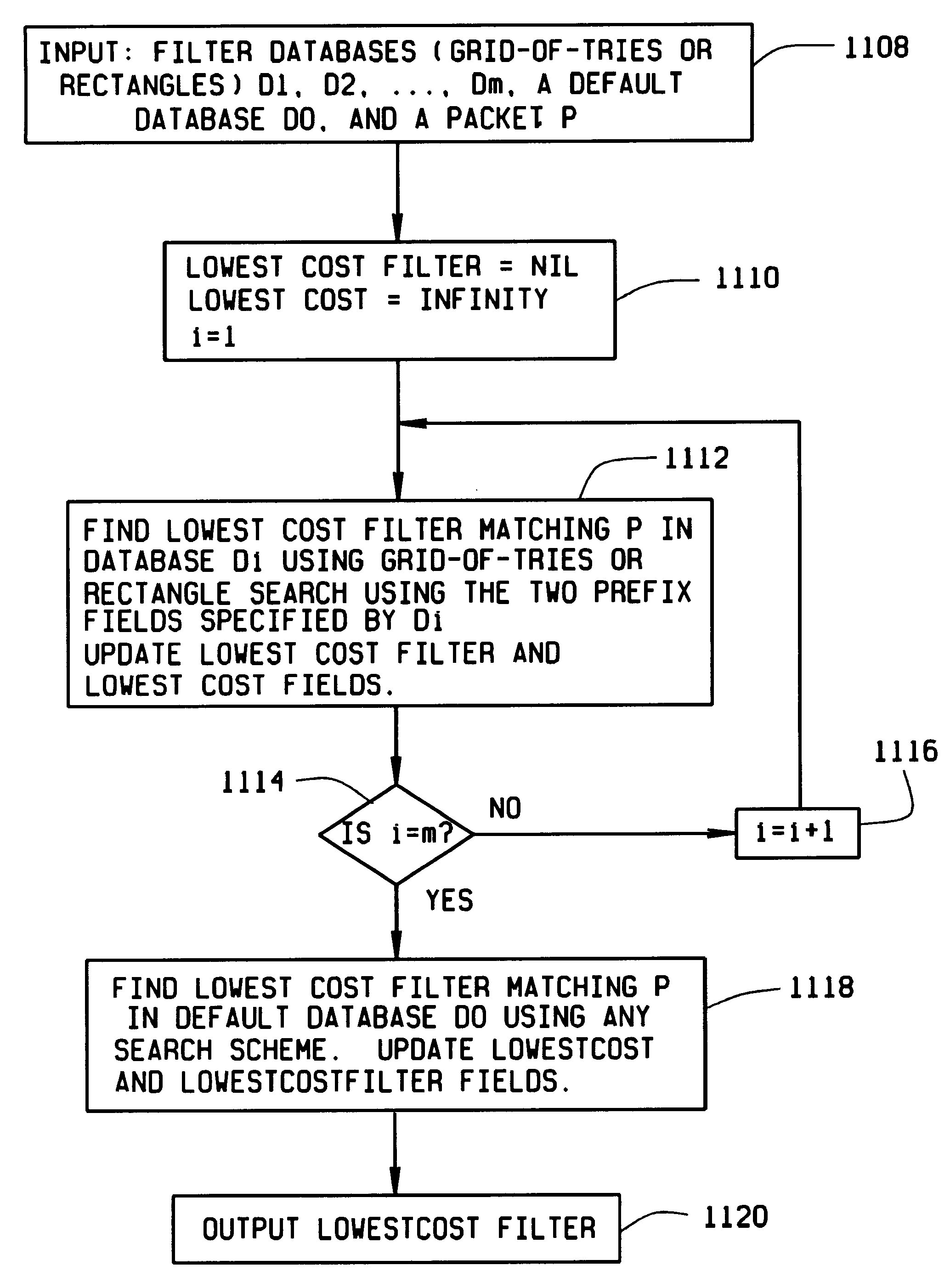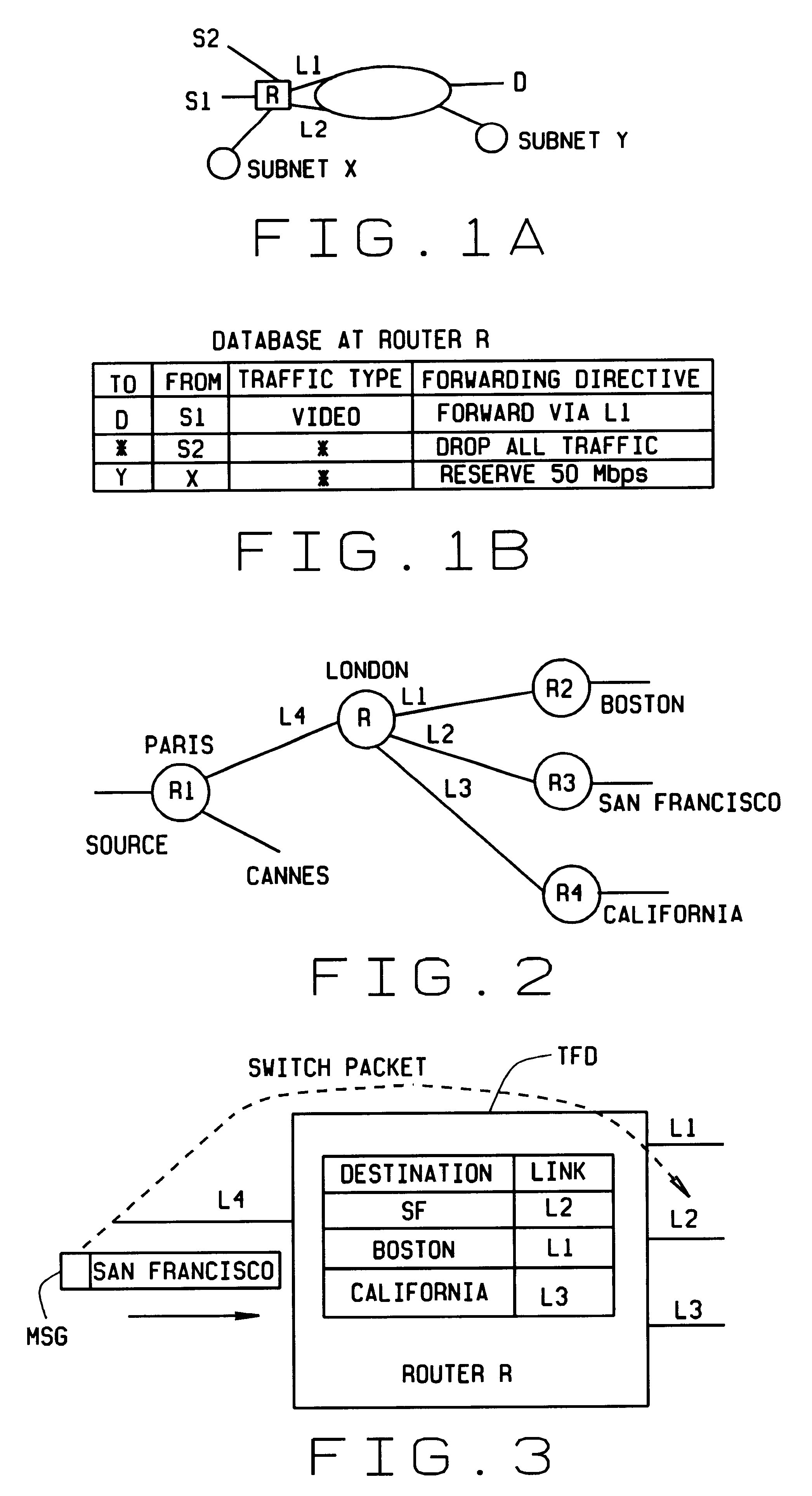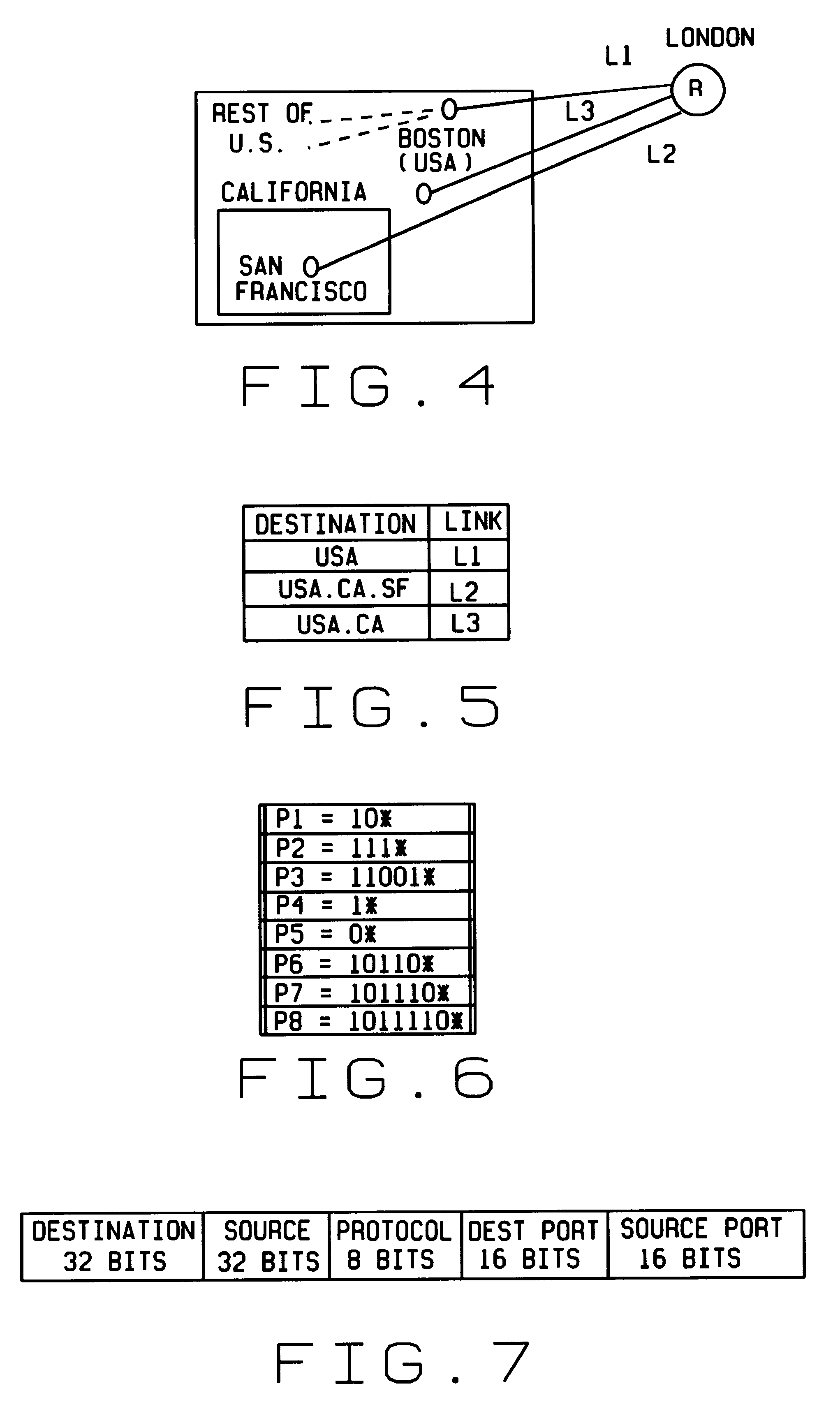Multimedia applications, for instance, can easily consume megabytes of bandwidth.
Increasingly, however, users are demanding, and some router vendors are providing, a more discriminating form of router forwarding.
Traditional routers do not provide service differentiation because they treat all traffic going to a particular
Internet address in the same way.
Second, when data is encrypted for security, it is not clear how routers can get access to higher layer headers.
Once users have gotten used to the flexibility and features provided by firewalls, traffic reservations, and QoS (
Quality of Service) routing, it is hard to believe that future routers can ignore these issues.
On the other hand, it seems clear that the ad hoc solutions currently being deployed are not the best, and cleaner and more general techniques are possible.
Today, even firewall
processing with 10-100 filters is generally slow because of
linear search through the filter set, but is considered an acceptable price to pay for "security".
Thus the problem of finding the
best matching filter for up to 100K filters at
Gigabit speeds is an important challenge.
The
computational problem of determining the outgoing link based on the message's address is called the address lookup problem.
While there are several tasks a router performs in forwarding a message, the address lookup is one of the major bottlenecks, and thus the subject of much current research.
So, address lookup is a
bottleneck at high speeds.
There are far too many different internet addresses for each router to keep in its
database.
While storing each destination address explicitly in the
database may greatly simplify the lookup problem, the memory requirement for this scheme at each router will be impractically enormous.
Updating a large database containing all internet addresses is also infeasible at such a
high frequency.
While the use of prefixes greatly reduces the memory needed to store the database, it makes the lookup problem more complicated.
Unfortunately, this benefit comes with a price, in that the routers must now do the address lookup by solving a much more difficult problem, referred to as the longest matching prefix problem.
However,
the Internet lookup problem is a lot harder than looking up a phone number in a phone book, or a word in a dictionary.
The Internet lookup problem is a lot harder than
dictionary search because Internet routers store address prefixes in their forwarding tables to reduce the size of their tables.
However, the use of such address prefixes makes the lookup problem one of longest matching prefix instead of
exact matching.
The longest matching prefix problem is a lot harder.
We will see that the longer length of IPv6 addresses will only make the lookup problem more difficult for the routers.
Traditional routing, using destination address only, is sufficient for delivering Internet messages to their intended destinations, but it does not allow a router to distinguish between different kinds of messages going to the same address, say, D. For instance, casual web surfing to address D may be less important than access to a company database at the same address.
However, a message sent from the dorm for email can match both rules, thus, the Rules conflict.
Thus, each rule or filter has an arbitrary cost, and the lookup problem is to find the
least cost matching filter.
Traditionally, the rules for classifying a message are called filters, and the Layer 4 Switching problem is to determine the lowest cost matching filter for each incoming message at a router.
Incurring a
linear search cost to search through 100,000 filters is a
bottleneck even if it occurs on only 10 to 20% of the packets.
Unfortunately, the worst-
case search and memory costs of this
data structure are infeasible, even for modest values of N and K. For instance, when N=10,000 and K=4, the worst-
case search cost is at least 13.sup.3 =2197 and the memory cost is 2197N.
The problem is that the probe outcome (fail or match) only eliminates one quadrant of the search space, and requires three recursive calls (not one, as in 1 dimension) to finish the search, which leads to a large search time.
One possible way to avoid making three recursive calls is to precompute future matches using markers, but that leads to an infeasible memory explosion of 2.sup.W / 2.
In summary, we believe that all known existing methods lead to either a large blowup in memory or lookup time for the least cost filter problem.
Both filters F.sub.4 and F.sub.5 have this destination prefix, and so the corresponding source prefixes 1* and 11* are stored at D. But storing only these filters is not sufficient, since filters F.sub.1, F.sub.2, F.sub.3 also match whatever destination D matches.
Unfortunately, this simple extension of tries from one to two dimensions has a memory blowup problem.
The problem arises because a source prefix can occur in multiple tries.
The problem is that since destination prefix * matches any destination header, each of the N / 2 source prefixes are copied N / 2 times, one for each destination prefix.
Unfortunately, the lookup cost in the modified embodiment is worse than the first embodiment: in the worst-case, the lookup costs .THETA.
However, the search immediately fails, since the first bit of the source is 0.
(Grid-of tries can be extended to
handle port number ranges by creating further two-dimensional "planes," but with a loss of efficiency.)
 Login to View More
Login to View More  Login to View More
Login to View More 


